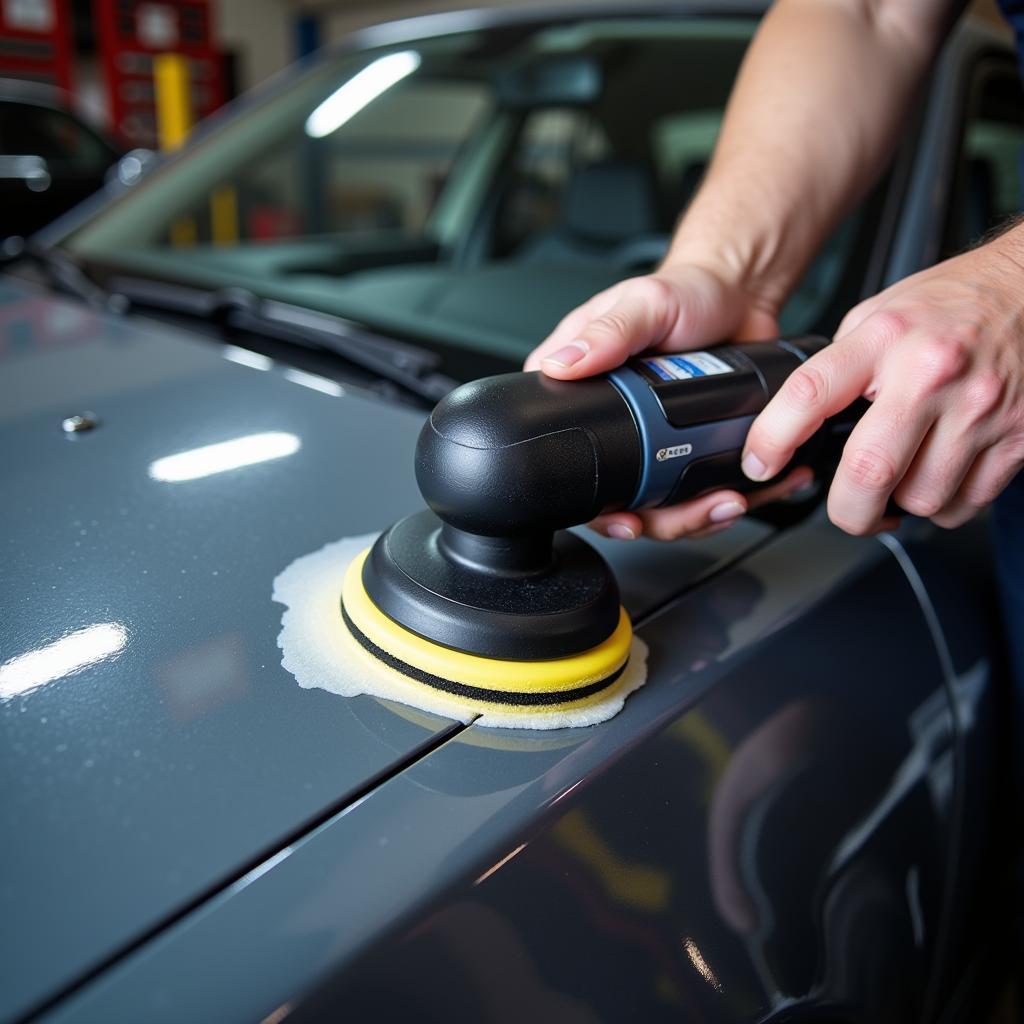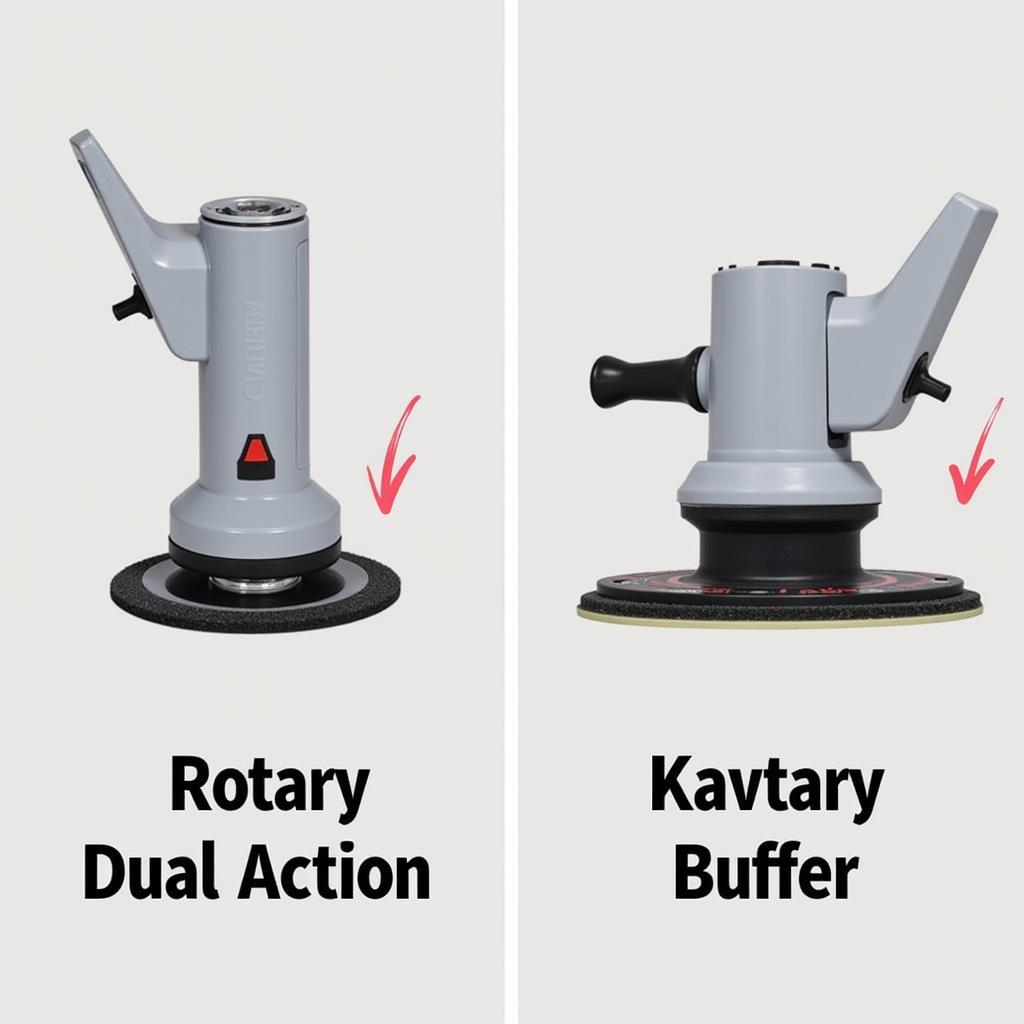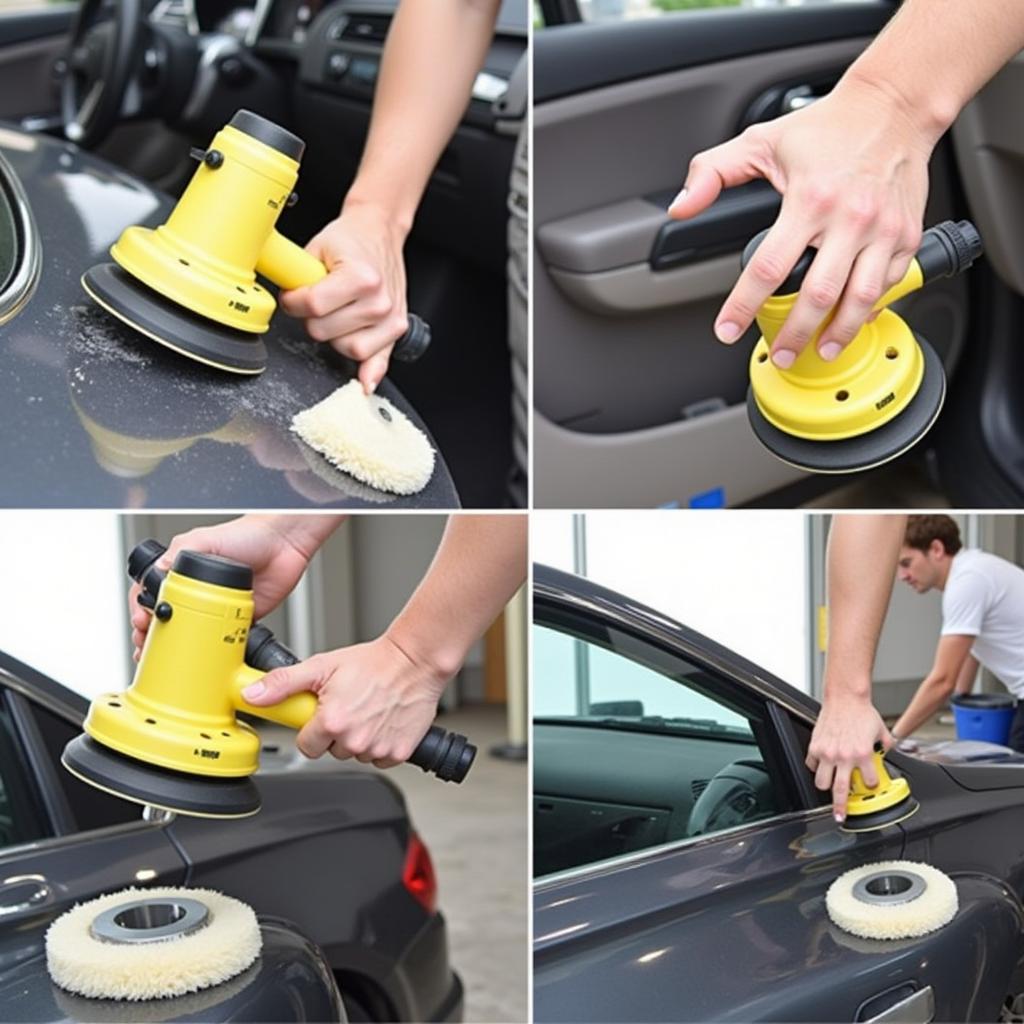Choosing the Best Buffer For Detailing Cars can feel overwhelming, especially with so many options flooding the market. Whether you’re a seasoned detailer or a weekend warrior looking to up your car care game, understanding the importance of a good buffer – and how to choose the right one – is crucial for achieving that flawless, swirl-free finish.
Why You Need a Car Buffer for Detailing
While hand polishing has its place, a car buffer elevates your detailing to a whole new level. These powerful tools use a rotating or oscillating head to evenly spread polish and correct paint imperfections, ultimately saving you time and effort while delivering professional-grade results.
 Car buffer being used to detail a car
Car buffer being used to detail a car
Types of Car Buffers: Rotary vs. Dual Action
Before diving into specific products, it’s vital to understand the two main types of car buffers:
Rotary Buffers: Power and Precision for the Pros
Rotary buffers are the heavy hitters of the detailing world. Their powerful, high-speed rotation is ideal for quickly removing heavy scratches, swirls, and oxidation. However, their power comes with a learning curve. Rotary buffers generate significant heat and require a skilled hand to avoid damaging the paint. These are best left to experienced detailers.
Dual Action (DA) Buffers: User-Friendly and Safe for Beginners
Dual Action (DA) buffers, also known as orbital buffers, are the more forgiving option and perfect for beginners. Unlike rotary buffers, their pads move in a random orbital pattern, significantly reducing the risk of burning or damaging the paint. While not as aggressive as rotary buffers, DA buffers are highly effective for removing light to moderate swirls and imperfections, leaving a polished, professional finish.
 Comparison between a rotary and a dual action buffer
Comparison between a rotary and a dual action buffer
Choosing the Best Buffer: Factors to Consider
Once you’ve decided between a rotary and DA buffer, consider these essential factors to find the best fit for your needs:
- Power and Speed: Look for a buffer with adjustable speed settings, allowing you to customize the power based on the task at hand.
- Ergonomics: Detailing can be physically demanding, so a comfortable grip and balanced weight distribution are essential.
- Pad Size: Smaller pads offer greater control for intricate areas, while larger pads cover more surface area, ideal for larger panels.
- Weight: A lighter buffer is easier to maneuver, especially for extended periods, but a heavier buffer can provide more stability.
- Budget: Buffers range in price from budget-friendly options to professional-grade investments. Determine your budget and look for the best value within your range.
Best Car Buffers for Detailing: Our Top Picks
Based on the criteria mentioned above, here are some of the top car buffers available:
- Best Overall: [Specific Brand and Model] – This buffer offers an excellent balance of power, features, and user-friendliness, making it a versatile choice for both beginners and experienced detailers.
- Best for Beginners: [Specific Brand and Model] – This user-friendly and forgiving DA buffer is perfect for first-time users, providing a safe and effective way to achieve a swirl-free shine.
- Best for Professionals: [Specific Brand and Model] – This powerful and robust rotary buffer is designed for experienced detailers who demand the utmost precision and performance.
Essential Tips for Using a Car Buffer
Using a car buffer effectively and safely requires proper technique and attention to detail:
- Always work in a well-ventilated area.
- Wash and dry your car thoroughly before buffing.
- Use the correct type of buffing pad for the task.
- Prime your pad with polish before starting.
- Work in small sections, overlapping each pass.
- Keep the buffer moving to avoid heat buildup.
- Don’t apply too much pressure.
- Wipe away excess polish with a microfiber towel.
- Inspect your work regularly and adjust your technique as needed.
 Correct technique of using a car buffer for polishing
Correct technique of using a car buffer for polishing
FAQs
Q: What’s the difference between a polishing pad and a buffing pad?
A: Polishing pads are designed for applying polish and removing light imperfections, while buffing pads are more aggressive and designed for removing heavier scratches and swirls.
Q: How often should I buff my car?
A: The frequency of buffing depends on factors like your car’s paint condition, driving habits, and environmental exposure. Generally, buffing once or twice a year is sufficient for maintaining a swirl-free shine.
Q: Can I use a car buffer on all types of car paint?
A: While most modern car paints can be buffed, it’s essential to check your car’s paint type and manufacturer recommendations before using a buffer.
Conclusion
Investing in the best buffer for detailing cars empowers you to unlock professional-level results from the comfort of your garage. By understanding the different types of buffers, their strengths, and proper usage techniques, you’re well on your way to achieving that coveted, head-turning shine. For more car detailing tips and product recommendations, explore our other insightful articles best lights to use for detailing cars and best car wash soap. Need personalized assistance? Our team of experts is just a message away! Contact us via WhatsApp at +1(641)206-8880 or email us at [email protected] for 24/7 support.

Leave a Reply